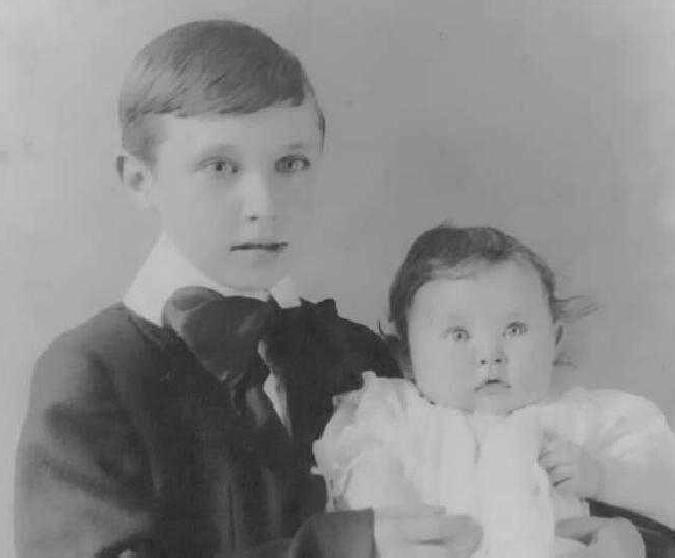
Figure 1.--Eton collars were worn with aide range of suits and other outfits. This American boy wears an Eton collar and bow with a standard suit jacket. I'm not sure what color the bow might have been. |

|
The Eton collar was worn with a wide variety of different clothes. The best known of course is the Eton suit, but the Eton collar was much more widely known than just with Eton suits. The style became very popular and cane to be worn with many different outfits. They were worn by younger boys with dresses and kilt suits. It was a popular collar with the Highland kilt. We note them being worn with tunic suits. They were worn with a wide range of dofferent suits like the Norfolk suit. We even note them being worn with sailor suits. The Eton suit in America was adopted as a suit style for tounger boys and at first was worn with the Eton collar.
Boys in the 19th Century commonly wore dresses or kilt suits until they were 5 or 6 years of age, sometimes even older.
Dresses: The dresses employed a variety of collars and necklines.
Eton collars were rarely employed.
Kilt suits: The collars employed with kilt suits did sometimes include an Eton collar. This was not common as boys in kilt suits would be likely to have a fancy lace or ruffled collar, deemed more
suitable for younger boys. These suits were not really kilt suits, but rather skirted suits and not worn with Highland regalia.
Some British boys wore Scottish kilts in the late 19th and 20th Century. While not as common, this was not unknown in America. President Franklin Roosevelt as a boy, for example, wore Scottish kilts. These were different from the so called kilt suit in that they were reconizeable bright Scottish plaids and included full Highland regalia. These outfits were worn with a
variety of collars, including Eton collars.
Tunic suits became popular for younger boys in the late 1890s. There were several different styles. Sailor tunics had sailor collars. Russian tunics did not have collars. Buster Brown tunics mostlt had wide white collars, but a few had Eton collars. Some fancy tunics also had Eton collars. HBC believes that these tunic suits were especially popular in America.
Eton collars were most commonly worn by older boys after they had graduated from more juvenile clothes such as tunics, Fauntleroy suits, sailor suits and
other styles for younger boys. A boys first real suit by the 1870s or 1880s would often have a Eton collar. One of the most common suit styles was the
Norfolk suit. These suits usually had either kneepants,
knickers, or long pants. While kneepants were popular in the late
19th Century, Norfolk suits often came with knickers. Short pants were less common as by the time they had become stylish, Eton collars were less common. Eton collars were also worn with kilts.
Eton collars made a brief come back in the 1940s when they were used with the Eton suits marketed for younger boys with very short short pants. While
these Eton suits remained populr for little boys over several decades, the collars were soon replaced with more comfortable Peter Pan and other soft collars.
Sailor suits are an outfit that are not normally associated with Eton collars. Sailor suits were popular as boyswear because they looked smart. Perhaps more important to boys is that theywere comfortable. They were essetially open collars in sharp contrastt to the closed collar and stiff Eton collar. The Eton collar became so engrained as a boy's collar style that some mothers actually added it it sailor suits. Apparently some mothers were not happy with an ingormal look. We do not notice this very commonly in America. We do see examples in Europe. An example here is Maurice Carmichael Tweedie, an English boy in 1878. We note two Surbiton boys with the same combination in 1890. We also havednoted several examples in Germany
Navigate the Historic Boys' Clothing Web Site:
[Return to the Main Eton collar page]
[Return to the Main collar page]
[Return to the Main Eton suit page]
[About Us]
[Introduction]
[Activities]
[Biographies]
[Chronology]
[Clothing styles]
[Countries]
[Girls]
[Theatricals]
[Topics]
[Bibliographies]
[Contributions]
[FAQs]
[Glossaries]
[Images]
[Links]
[Registration]
[Tools]
[Boys' Clothing Home]
Navigate the Historic Boys' Clothing Web chronological pages:
[The 1840s]
[The 1850s]
[The 1860s]
[The 1870s]
[The 1880s]
[The 1890s]
[The 1900s]
[The 1910s]
[The 1920s]
[The 1930s]
[The 1940s]
Navigate the Historic Boys' Clothing Web style pages:
[Long pants]
[Knickers]
[Short pants]
[Scottish kilts]
[School uniform]
[Sailor suits]
[Eton style]
[Ring bearer/page costumes]
[First communion]
